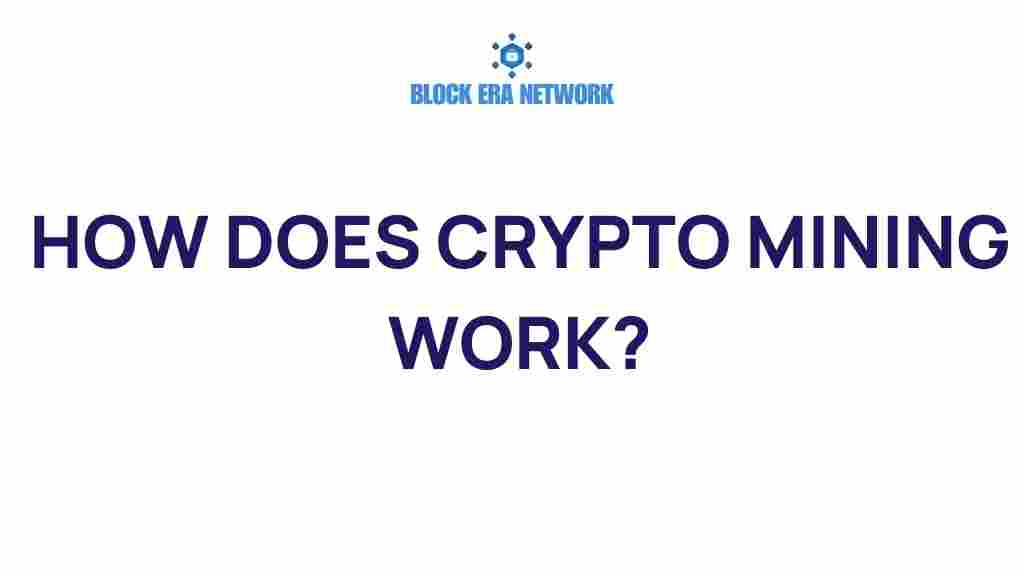How Does Crypto Mining Work?
Crypto mining is the backbone of blockchain technology and a key process that keeps cryptocurrencies decentralized. It involves solving complex computational puzzles to validate and add transactions to the blockchain ledger. But how does crypto mining work, and why is it so critical? Let’s delve into its mechanisms, benefits, and challenges.
What Is Crypto Mining?
Crypto mining is the process of using computational power to solve cryptographic problems. In return, miners are rewarded with new cryptocurrency tokens. It serves two primary purposes:
- Transaction Verification: Ensures the authenticity of transactions.
- Network Security: Prevents fraud and double-spending on the blockchain.
This process underpins the decentralized nature of cryptocurrencies like Bitcoin, Ethereum, and others.
Why Is Crypto Mining Important?
The decentralized nature of blockchain requires miners to validate transactions instead of relying on a central authority. Without crypto mining, there would be no consensus, making the blockchain vulnerable to attacks. Additionally, mining introduces new coins into circulation, ensuring a steady supply until the maximum cap is reached.
The Step-by-Step Process of Crypto Mining
Understanding how crypto mining works involves breaking it down into several steps. Here’s an overview:
1. Setting Up Hardware
Crypto mining begins with choosing the right hardware. Popular options include:
- ASIC Miners: Purpose-built for mining specific cryptocurrencies, offering high efficiency.
- GPU Miners: Versatile and suitable for mining multiple cryptocurrencies.
- CPU Mining: Rarely used due to low efficiency but still viable for some lesser-known coins.
Once you’ve selected your hardware, ensure it’s set up in a cool, well-ventilated space.
2. Installing Mining Software
To begin mining, you need specialized software compatible with your hardware. Popular programs include:
Download and install the software, then configure it to connect with your mining pool or solo mining setup.
3. Joining a Mining Pool
Solo mining can be challenging due to its high computational demands. Instead, many miners join pools to combine resources and share rewards. A mining pool divides the work among participants and distributes payouts based on contributed computational power.
4. Verifying Transactions
Miners compete to solve a cryptographic puzzle, which involves finding a specific hash value. The first miner to solve the puzzle gets to validate the block and earns a reward. This process is called proof of work (PoW).
5. Adding Blocks to the Blockchain
Once a miner solves the puzzle, the block is added to the blockchain, making it immutable and visible to all network participants. The miner receives newly minted coins as a reward, along with transaction fees from the block.
6. Maintaining the Network
Crypto mining isn’t just about earning rewards—it’s also about maintaining the network’s security and functionality. Miners ensure transactions are legitimate and the blockchain remains tamper-proof.
Common Challenges and Troubleshooting Tips
Crypto mining can be rewarding, but it’s not without its challenges. Below are some common issues miners face and how to address them:
1. High Energy Consumption
Mining is energy-intensive, often leading to high electricity bills. To mitigate this:
- Invest in energy-efficient hardware like ASIC miners.
- Consider renewable energy sources to reduce costs.
- Monitor power usage and adjust settings to maximize efficiency.
2. Hardware Overheating
Mining rigs generate significant heat, which can damage components if not managed. Solutions include:
- Installing additional cooling systems or fans.
- Placing rigs in well-ventilated areas.
- Regularly cleaning hardware to prevent dust buildup.
3. Mining Software Issues
If your mining software crashes or malfunctions:
- Update to the latest version of the software.
- Check compatibility with your hardware and operating system.
- Join online forums or communities for troubleshooting advice.
4. Network Difficulties
Sometimes, network congestion or connectivity issues can slow down mining operations. Troubleshooting steps include:
- Switching to a different mining pool with lower latency.
- Checking your internet connection and ensuring stability.
- Using a VPN to bypass regional restrictions or throttling.
The Future of Crypto Mining
The crypto mining landscape is constantly evolving. With the rise of proof of stake (PoS) and other consensus mechanisms, mining may become less energy-intensive and more accessible. However, PoW-based cryptocurrencies like Bitcoin are likely to continue relying on mining for network security.
As technology advances, innovations like quantum computing and green energy solutions may further transform the mining ecosystem. Staying updated on these trends is crucial for any aspiring miner.
Conclusion
Crypto mining is a fascinating and integral part of the cryptocurrency ecosystem. From understanding the technical aspects to troubleshooting common issues, learning how crypto mining works is essential for anyone looking to participate in the blockchain revolution.
If you’re ready to dive deeper, explore our comprehensive guide to blockchain technology or visit the official Bitcoin website for more insights.
This article is in the category and created by Block Era Network Team
